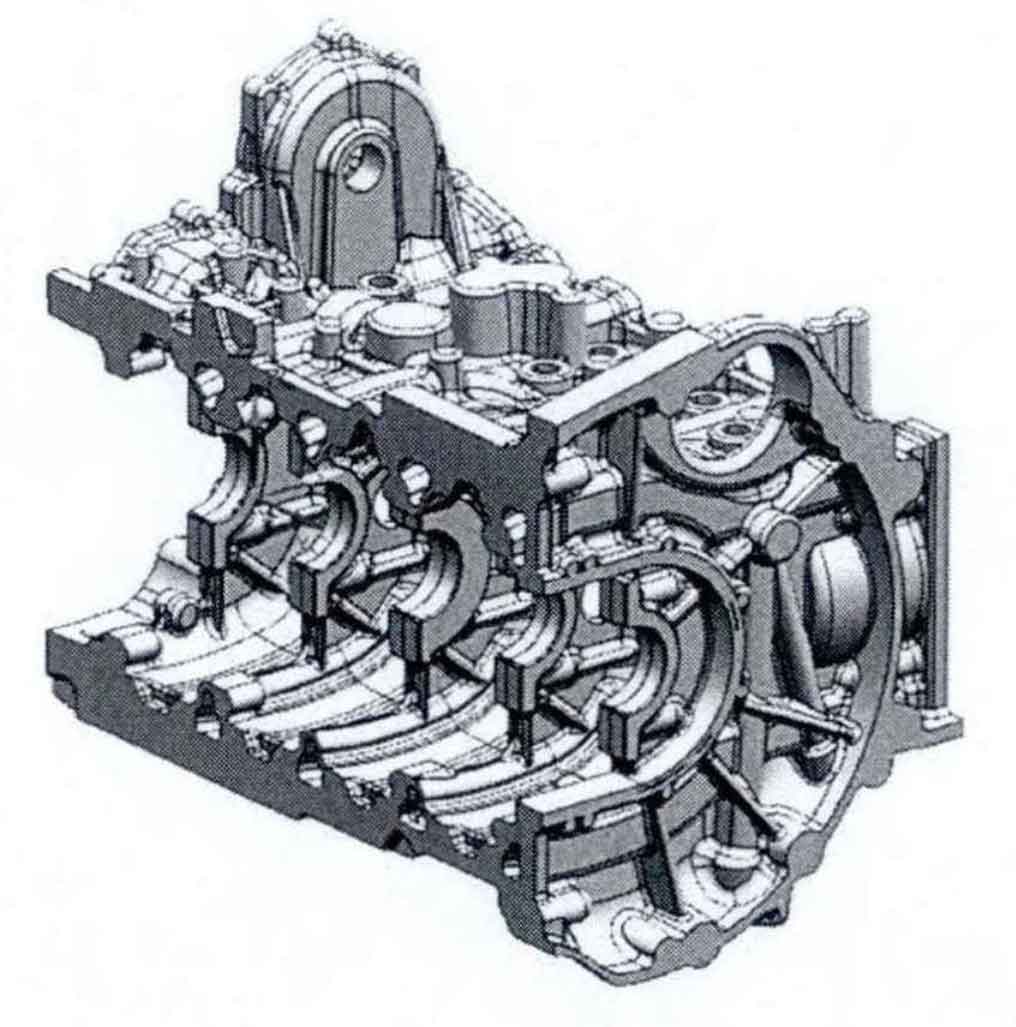Aiming at the process of producing gray cast iron engine block by sand casting, the casting process of gray cast iron is optimized to improve the microstructure and properties. The effect of tin inclusions in gray cast iron on its microstructure and properties was emphatically discussed; The quality of molten iron is controlled by changing the ratio of smelting raw materials, so as to produce high-strength gray cast iron cylinder block stably, so as to meet the various properties of gray cast iron engine cylinder block; Finally, the main defects in gray cast iron are analyzed, and the improvement measures are put forward to improve the yield of castings and stabilize the production process.

- Tin in grey cast iron mainly comes from tin particles in scrap and reheating charge or tin formed by the reaction of Ti in steel matrix and N in molten iron. When the molten iron containing [%ti] = 0.045% is undercooled to 1368 ° C, the [%ti]. [% in the cast iron melt N]= 0.000247, that is, tin starts to crystallize. The more tin particles in cast iron, the larger the size, will significantly reduce the tensile strength and machinability of gray cast iron.
- There are two forms of tin particles crystallized from gray cast iron soldering body: Tin crystallized from the melt is usually distributed at the austenite grain boundary, and the size is about 4-8 μ m. This kind of tin particles with slightly larger size often crystallize with MNS as the core. This is because MNS and tin belong to face centered cubic structure, the mismatch degree of their lattice constants is low (only 0.05), and the surface is easy to form a semi coherent interface, which is conducive to the heterogeneous nucleation of tin; The tin precipitated from the undercooled austenite is distributed in the austenite, and the size is only 1-2 μ m。
- The graphite flakes in the gray cast iron with 100% scrap are mostly fine, curved short-film A-type graphite and a small amount of D-type graphite. The pearlite based structure is refined to form sorbite structure. The number of MNS, tin and other non-metallic inclusions is small and the size is small.
- In the gray cast iron with 100% scrap, the graphite refinement and bending lead to the increase of crack propagation resistance; At the same time, with the increase of pearlite content and the refinement of lamellar spacing, the crack propagation modes in the cast iron matrix are diversified, and the crack propagation resistance will also increase significantly. These are the main reasons for the remarkable improvement of mechanical properties of castings.
- The white tendency of gray cast iron cylinder body often appears at the angle between the thin wall and the tip, and the hardness can reach 500hv; The pore defect is dark gray, with regular shape, and the inner wall has winged oxide skin and inclusions; Slag hole (sand hole) defects often appear on the upper mold surface of the casting or the inner surface of the cylinder barrel, with irregular shape and dark gray inside. Through electron microscope analysis, some white and bright substances can be found, which are mainly a mixture of Al203, si002 and mn002 (scum composition). In view of the above defects, improvement measures are put forward from the aspects of smelting process, pouring process, solidification and cooling process, and the effect of eliminating defects is obvious.
